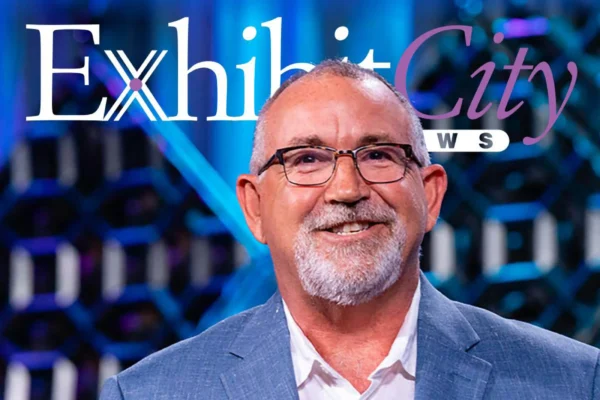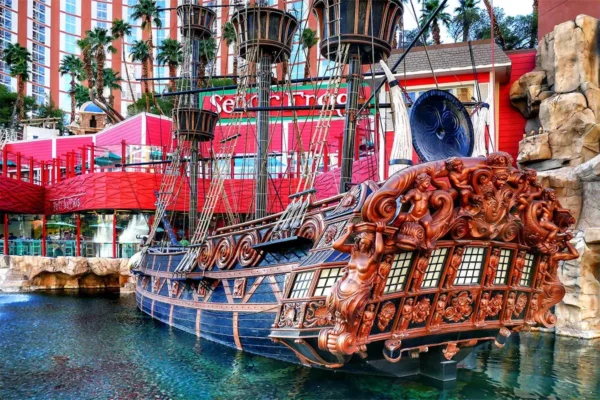Tired of hearing about AI?
Brace yourself. The convergence is already underway.
In the ever-evolving landscape of goods and services, a hybrid transformation is taking shape. This shift promises to revolutionize trade show processes, making them more efficient and cost-effective for all stakeholders involved. Let’s explore how AI is becoming a game-changer.
The Challenge:
In a scenario where corporate trade show budgets remain stagnant, the costs associated with exhibiting and labor are on the rise. The complexity and time investment required for trade show planning and execution by corporate managers, agency creatives, and project managers are formidable challenges.
Corporate Planners:
Depending on the scale of the trade show, trade show managers and their teams dedicate substantial hours to various phases:
- Pre-Show Planning: A hefty 200-500 hours are invested in the 6-12 months leading up to the event. Tasks encompass goal setting, budgeting, booth design, logistics, and marketing strategies.
- Booth Preparation: About 100-300 hours are dedicated to activities like finalizing design, ordering materials, staff training, and lead capture setup.
- On-Site Execution: Trade show managers invest 8-12 hours each day in active booth management, networking, and lead capture activities.
- Post-Show Follow-Up: Approximately 40-60 hours are spent assessing the show’s success, analyzing lead data, and preparing reports.
In total, the commitment typically ranges from 320 to 860 hours or more, depending on the event’s scale.
Event Agencies:
Event agencies supporting their clients are no strangers to extensive time investment:
- Pre-Show Planning: Agencies dedicate 100-300 hours or more over 6-12 months to tasks such as client meetings, goal setting, booth design, budgeting, logistics, and marketing strategy development.
- Booth Preparation: For larger, custom-designed exhibits, this can range from 200 to 500 hours or more.
- Marketing and Promotion: Agencies invest 200-400 hours or more in activities including digital marketing, social media campaigns, email marketing, and PR efforts.
- On-Site Execution: Approximately 40-80 hours (focused on project management, not labor) are spent on-site during multi-day trade shows.
- Post-Show Follow-Up: An additional 20-60 hours or more are allocated to assisting with lead follow-up, performance analysis, and evaluation.
Please note that these estimates can vary based on factors like event complexity, geography, and timelines.
The AI Opportunity:
According to a 2023 study highlighted in Statista, exhibitors in the United States plan to participate in an average of 29.5 regional trade shows throughout the year. When you multiply this by the planning and implementation time outlined above, the potential impact of AI becomes evident.
Where AI Can Revolutionize:
AI is not a threat but a lifeline. It offers the potential to lower exhibition expenses, enhance cost-to-value ratios, strengthen the industry, and earn preference among marketers. AI can streamline various aspects of trade show management:
- Lead Generation and Management: Efficiently identifying and qualifying leads by analyzing attendee data, social media profiles, and engagement patterns.
- Customer Support: Streamlining real-time communication using chatbots, information collection, answering common questions, and resolving issues efficiently.
- Personalized Recommendations: Analyzing attendee preferences and behavior to recommend relevant exhibitors, sessions, and networking opportunities.
- Data Analytics: Processing large volumes of data generated during trade shows to provide actionable insights on attendee behavior, booth performance, and event effectiveness.
- Content Creation: Developing marketing materials, presentations, and booth designs by generating content and design suggestions based on industry trends and best practices.
- Event Planning and Scheduling: Creating event schedules, booth placements, and floor layouts.
- Security: Detecting and responding to potential threats, such as unauthorized access or suspicious behavior.
- Language Translation: Facilitating communication between attendees and exhibitors from different regions, breaking down language barriers.
- Audience Engagement: Curating interactive experiences at booths, such as virtual reality (VR) and augmented reality (AR) demos, gamification, and interactive presentations.
- Predictive Analytics: Predicting attendance numbers, booth traffic, and other key metrics to enable better resource allocation and planning.
- Feedback Analysis: Automating the analysis of post-event surveys and social media feedback to identify areas for improvement and track overall event sentiment.
- Networking: Creating matchmaking algorithms to connect attendees with similar interests and goals, facilitating networking opportunities.
TAKEAWAY
While AI streamlines, enhances efficiency, and maximizes cost-effectiveness, it is the human touch, the creativity, and the strategic decision-making that remain the heart and soul of event planning and execution. AI is our partner, not our replacement, ensuring the vitality and enduring success of our industry.
The future waits for no one.
***Check back for link to valuable resources.
Chris Kappes is a three-decade executive who has served as CMO, CSO and President of leading event agencies. Kappes is a published author of two trade books, The Noise Behind Business. How to Make Tradeshows Work & How to Master the Art of Selling at Tradeshows co-written with sales expert, Tom Hopkins. Kappes shares his industry experiences and views at conferences and publications like Exhibit City News. His contact information: kappes52@gmail.com























